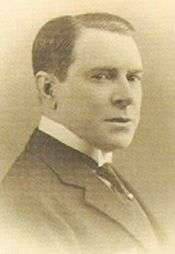Château d'Artigny

The Château d'Artigny was built between 1919 and 1928 in the Commune of Montbazon, in the department of Indre-et-Loire, France.
The First Castles
Having originally been constructed around the keep of Montbazon, an advanced bastion, during the Hundred Years' War, the Château d'Artigny was incorporated into the line of defences established along the Indre River. It was subsequently demolished in 1769 by its owner, Joseph Testard de Bouranis, the king's treasurer, who replaced it with his private residence. This survived the Revolution and was modified in the 19th Century.
François Coty
It was on 30 July 1912 when Joseph Spoturno, also known as François Coty, bought the château. Born on 3 May 1874 in Ajaccio, he was a wealthy and renowned perfumer and media magnate, as well as politician. Later dubbed "The French Mussolini", he was the councillor for Bastia and mayor of his native town in 1931.

(date unknown)
On a journey around Touraine he was captivated by the location but, feeling the building to be badly placed on the cliff overlooking the Indre, he had the château demolished and rebuilt 12 metres further away on foundations different from the current ones. Measuring 60 metres by 18 metres and 27 tall, it was a mirror image, except for two windows fewer on each floor, of the château at Épinay-Champlâtreux which was constructed by the architect Jean-Michel Chevotet between 1751 and 1757. There was also a chapel which was a copy of the one at the Palace of Versailles, albeit a quarter of the size. The chapel was connected by an underground passage to a crypt made for François Coty and his descendants.
The period from 1919 to 1928 marked the partial end of this major project. Coty, "wanting to show that modern France was capable of performing just as well as royal France", employed 150 people – architects, master builders, sculptors, carvers, tile setters, painters, craftsmen and labourers. Denys Puech, the official sculptor (a receiver of the Prix de Rome) constructed an 18th-century style allegory on the tympanum of the pediment of the central front section overlooking the Indre valley.
This magnificently decorated, marble covered residence included four master apartments, its own generating station, air conditioning, a tailor’s and a bootmaker’s, a barber’s, cold storage for the lady of the house’s furs, as well as a walk-in dressing room containing 78 closets, to name but a few of the luxuries.
From 1929 up until Coty’s death in 1934 at his residence at Louveciennes (acquired in 1923), he lived for half of the year at Artigny with his family. During this time, he was waited on by 40 servants, employed several guards to watch his 1,300 hectare estate, which in one fell swoop included seven kilometres of river, French gardens, orchard greenhouses, several farms, three mills, a hunting lodge, a rectory and abandoned school buildings.
The office of the "Monsieur de Montbazon" was located on the first floor and had pride of place in a circular room topped with a dome. The dome was painted with a trompe l’oeil fresco by Charles Hoffbauer, a receiver of the Grand Prix de Rome 1924, and depicted a costume ball with friends and family at the château, in which it was possible to recognise Coty’s son-in-law, Paul Dubonnet as a sparrow with a glass in his hand. It was also possible to see the actresses Mary Marquet, Edwige Feuillère and Cécile Sorel, the ballet masters Serge Lifar and Serge Diaghilev, the painter Foujita, and the Aga Khan.
After Coty
Following the Crash of 1929, a luxurious lifestyle, a disastrous divorce, and the expense of his political magazine L’Ami du Peuple, his fortune had been heavily eaten into. The perfumer’s art collections were therefore sold at auction in 124 lots at the Galerie Charpentier in Paris on 30 November and 1 December 1936. After his death, the château was confiscated on the order of his numerous creditors.
In 1940, at the time when the French capital was relocated to Tours, the château had been identified as a potential shelter by a local aide-de-camp of Admiral Darlan and was subsequently occupied by the Department of the Navy. In 1941 it lay empty for a few months before being occupied by German troops until 1942, who in the meantime had painted the château brown to act as camouflage. Finally, it served as an annexe of Tours hospital, catering for the seriously wounded.
Coty’s family once again took possession of the château in 1947 and were made several offers. The projects to convert it into the head office of Indre-et-Loire’s general council or into a holiday park were not followed up so the heirs began to carve up the enormous estate.
After two years, in the course of which the library was converted into a lounge bar offering a unique collection of cognac, armagnac, port and whisky, it was opened at the end of 1961, under the name of the "Relais d'Artigny", becoming the first hotel company in Centre-Val de Loire. The wine cellar holds around 45,000 bottles of French wine, the finest collection in the world of Touraine wines. Since opening, Artigny has welcomed a number of personalities such as the Queen Mother and in 1963 Haile Selassie I, the last emperor of Ethiopia.
On 24–25 November 1973, under the guise of the establishment's annual closing, the finance ministers of the G5 countries met in the château for the International Monetary Conference, with Valéry Giscard d'Estaing presiding for France.
In April 1976, an inconspicuous meeting took place between the French President and his future successor, François Mitterrand at the château.
Artigny still belongs to the family hotel group, “Grandes Étapes Françaises”, whose president is Pierre Traversac. The château-hotel has 65 bedrooms, two dining rooms and a spa.
Coordinates: 47°16′51″N 0°41′24″E / 47.28083°N 0.69000°E